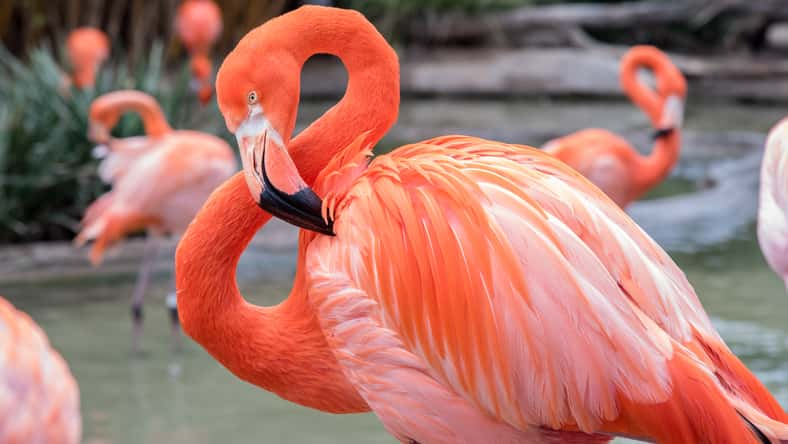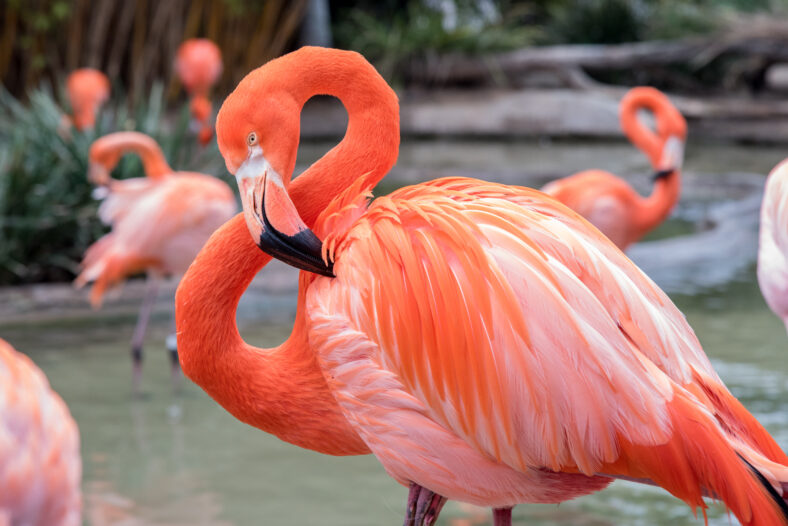Flamingos Use Underwater Tornadoes To Catch Their Food

Even in environments where food is scarce, flamingos have this unique ability to filter out shrimp and worms from the water. A new study has revealed exactly how the birds ensnare their prey, and it’s probably more complex than you think.
In 2019, Victor Ortega Jiménez, the lead author of the study and an integrative biologist at the University of California, Berkeley, visited the Zoo Atlanta and noticed that the flamingos stomped their feet and submerged their beaks underwater. But only ripples could be seen on the surface, so he wanted to find out what was going on beneath the surface.
So, he and his team analyzed three Chilean flamingos at the Nashville Zoo. Over the course of several weeks, they taught the birds to feed from a tray filled with water and used cameras and lasers to monitor them.
Then, the researchers created 3D-printed models of the birds’ heads, feet, and bills to take a closer look at how they affected the water’s movement.
Finally, they attached a red flamingo beak to a machine that made it snap open and shut. There was also a small pump to act as the bird’s tongue.
The researchers discovered that the flamingos used the motion of the water to funnel food to their mouths. They stomped their feet to dredge up food to the surface and bobbed their heads up and down to create tornado-like vortices underwater. This technique concentrated particles and helped them catch prey more efficiently.
The flamingos also snap their beaks and move their tongues in and out, allowing them to catch seven times more brine shrimp.
The small tornadoes they created were strong enough to trap even agile invertebrates like brine shrimp and microscopic crustaceans called copepods.
When the researchers calculated how quickly the flamingos would have to move to create a tornado-like vortex, they found that the birds needed to retract their heads at almost 16 inches per second, while the lower beak snapped about 12 times per second.

Sign up for Chip Chick’s newsletter and get stories like this delivered to your inbox.
Their feeding process can even benefit other birds. A study from 2018 showed that Wilson’s phalaropes can double their food intake if they trail behind a feeding flamingo. Moving forward, the team wants to investigate what happens inside flamingos’ beaks when they’re feeding.
They hope the process can inspire the development of new technologies that use the power of vortices to capture toxic algae or microplastics from water.
“Flamingos are super-specialized animals for filter feeding,” said Ortega Jiménez. “It’s not just the head, but the neck, their legs, their feet, and all the behaviors they use just to effectively capture these tiny and agile organisms.”
The new findings were published in the Proceedings of the National Academy of Sciences.
More About:Animals